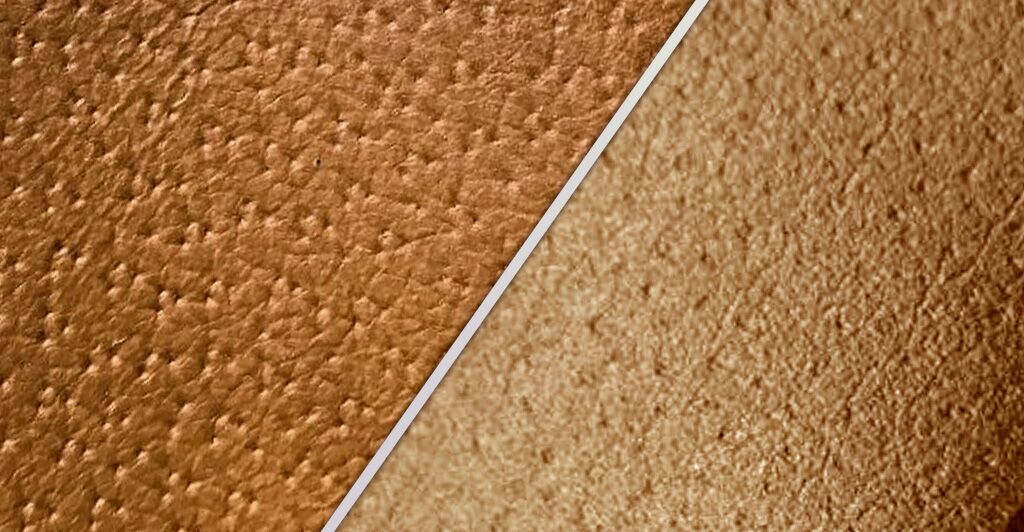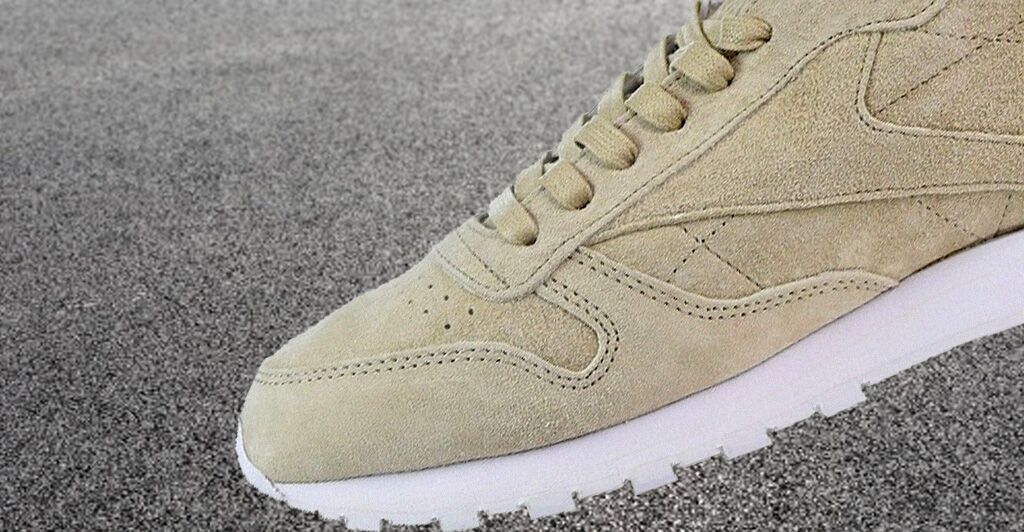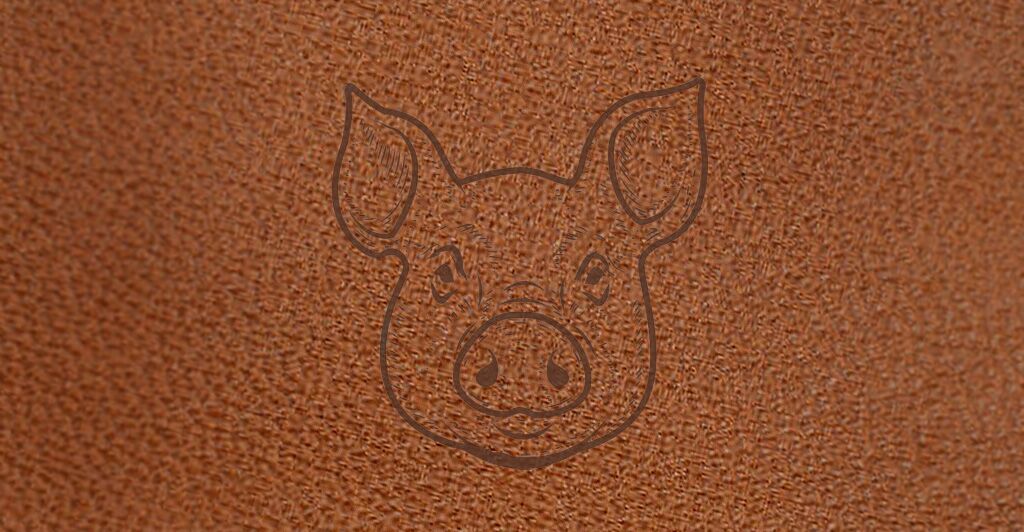Pig leather, also called pigskin leather or swine leather, is made from domestic pigs. It is a unique material used in clothing and accessories. It has become increasingly popular in recent years due to its breathability, distinctive look, softness, and ability to be curved into various shapes. This makes it an ideal choice for certain types of garments and footwear with increased air circulation and comfort.
This article will explain what makes pigskin leather unique, how it’s made, and some of the different uses for this versatile material.
Pigskin Leather Appearance
Yes, pig skin can be used not only for practicing tattoos but also for making leather. And one of the most prominent features of pig leather is its visible hair pores. You can easily identify pigskin leather by these tiny holes. They are distributed all over the surface of the hide. While other types of hides may have these pores, they are usually much less visible than on pigskin leather. Here are some samples, how pigskin leather looks like up close:

These pores not only give pigskin leather its unique texture but also provide additional breathability compared to other hides.
Pigskin Leather Quality
When it comes to quality, pig leather is known for its toughness and almost the same durability as cowhide leather. The fibrous structure of the material makes it resistant to wear and tears even with regular use. Additionally, pigskin leather has high amounts of natural oils that help keep it soft and flexible. This means you can enjoy comfortable products made with this type of leather without worrying about them becoming stiff over time. So, pigskin leather is a good choice in terms of durability. Additionally, it has a soft texture, allowing it to be used in many different applications, such as jackets, wallets, purses, shoes, and even watchbands!
Despite breathability, the primary benefit of using pigskin leather over other materials is its ability to resist extreme temperatures without suffering heavy damage. When exposed to direct flame, pigskin leather will char instead of burning or melting like synthetic fabrics. In addition, the material can withstand low temperatures as well. High heat resistance and cold resistance make pig leather useful in extreme temperature conditions.
Pig Leather is Not So Waterproof
Unfortunately, pigskin leather has low water resistance because of its breathability. This means that exposure to moisture or water can cause stains or damage to the material. It’s important to be aware of its limitations and take steps to protect pigskin leather from water damage.
To ensure your garments will be safe, you should use a protector spray or sealant. This will help to strengthen the material so it can withstand rainy weather and still be dry. Additionally, avoid storing shoes from pig leather in damp places. Instead, keep them away from excessive humidity and heat so they don’t absorb moisture from their surroundings.
Common Types of Pig Leather
There are several different types of pigskin leather available to consumers depending on their specific needs and intended use:
- Pigskin Nappa leather also called aniline leather – high-quality leather material that is known for its smooth and glossy finish. The aniline dyeing process makes it more durable and water-resistant. It is popularly used for making various items like wallets, bags, upholstery, car interiors, and furniture. The term “Nappa” originated in Napa Valley in California, the first place where pigskin Nappa leather was produced.
- Pigskin suede – buffed on the flesh side of pig skin to create a nap. This process gives suede its distinct texture and appearance. The name derives from the French “gants de Suède” which translates to “glove of Sweden” – referring to the soft glove-like feel.
- Pigskin nubuck – made from the Top Grain part of pigskin. It has a velvety texture and suede-like appearance. Pigskin nubuck leather can be recognized by its short, fine fibers which are buffed on one side to create a smooth finish with a soft nap. This gives it an overall softer feel than regular Top Grain leather.

What is Pigskin Leather Used For?
Pig leather is most widely known for its use in American football, where “pigskin” became synonymous with the ball. This material was favored due to its ability to resist wear and tear. But even though the balls in American football are now made from vulcanized rubber, pigskin has kept the name ever since.
In modern days, many products are made from pigskin leather, with jackets, sofas, bags, and shoes being the most common. Pigskin jackets have become increasingly popular in recent years thanks to the stylish look they offer while remaining comfortable to wear. Sofas can also be upholstered with pig leather due to resistance to wear and tear caused by everyday use.
Additionally, pigskin’s natural softness can give bags or shoes a luxurious feel. Even such famous brands as Adidas uses pig leather for some models of their “gazelle” shoes, as written right on product cards on the Adidas Singapore official website.
Cow Leather vs Pig Leather
Cowhide and pigskin each have their own unique advantages. In terms of quality, cowhide is often considered a slightly stronger and more waterproof material. Cowhide can withstand more wear and tear than pigskin. Unlike pig leather, which is usually limited to more modern accessories like wallets or shoes, cowhide leather can be found in many antique stores.
On the other hand, pig leather offers more breathability and comfort than cowhide, making it a greater choice for clothing where ultimate durability isn’t required. Pig leather is not expensive, and this material usually costs around two to three times less than cowhide leather. It makes it an attractive option for those looking for affordable luxury goods, or who want to craft them by their own hands.
How Pig Leather is Made?
The best quality pigskin leather comes from animals raised ethically and humanely, with enough space to move around and access proper nutrition. This ensures their hides are free from blemishes or other marks that can make appearance worse. These hides are then carefully tanned using traditional methods which help preserve their natural oils, giving them an incredibly soft yet durable finish.
The process starts with an inspection of the pigskin to remove any fat residues and dirt. The hide is then soaked in salt brine for several days. It helps to prevent rot during storage. After the soaking period, the hide is washed and scraped clean before undergoing a tanning process – either chrome or vegetable tanned – that preserves it against decay. The tanned hide can then be dyed into various colors before being cut into pieces based on their intended purpose.
Pigskin Leather Care
Cleaning
The most important in leather care is preventing damage due to dirt, dust, and moisture accumulating on the surface. It’s essential to clean the pig leather regularly with a damp cloth or soft brush. Additionally, use a mild detergent or saddle soap for periodic cleaning. Always make sure to test any product on an inconspicuous spot before applying it all over the surface. And do not wash pigskin leather products in a washing machine. It can cause irreversible water damage!
Storing
Make sure you store pig leather in place relatively dry and free from moisture. Pigskin can be susceptible to mold and mildew if exposed to moisture in the air or on the material surface. Also, it can cause discoloration and leave permanent creases in the material. Use proper hangs for long-term storage, or prepare to get wrinkles out of pigskin leather after storing. Keep your pigskin out of direct sunlight when storing it for extended periods. Ultraviolet rays from the sun can cause the leather to dry out and crack over time while also causing discoloration.
Repairing
If pigskin leather has a scratch or small tear you can use a leather cream, or special dye for leather. If there are larger tears or cracks, then you should use a specialized leather crack filler product that fills in and seals up any gaps in the material before smoothing it out with sandpaper or another abrasive surface treatment tool. After, apply some waterproofing to avoid future damage to the material.
Waterproofing
Pigskin leather can also be waterproofed to ensure its quality remains intact in wet conditions. Especially, apply waterproofing to Suede and Nubuck, as these delicate materials are vulnerable to moisture. Make sure the surface is clean and free of any dirt or debris. Next, apply a thin coat of water-repellent spray or cream over the surface of the leather. Use a microsuede applicator or soft cloth to apply it evenly. Finally, let it dry completely before wearing or using your newly waterproofed pigskin leather garment!
FAQ
Is pig leather good?
With its characteristic softness, pig leather is almost as durable as cowhide leather, making it an attractive option for those looking for quality materials to craft garments or accessories.
How to line pigskin leather?
Cut the leather pieces for lining – make sure they fit together snugly but still allow for some expansion if needed. Once you have your pieces lined up correctly use the awl to punch holes along both sides. Apply adhesive and sew the leather with needle thread. But be careful not to smear the thread with adhesive





